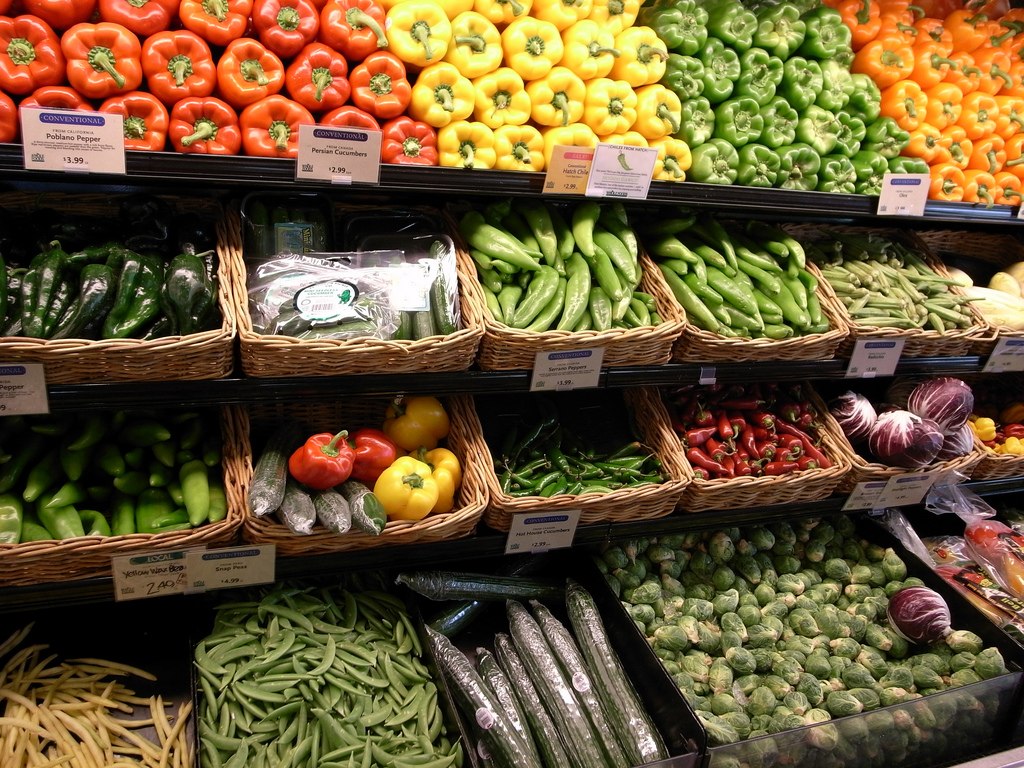10 global marketing innovations set to give Australia’s fresh-vegie producers the edge in Asia
Market research into 40 top vegetable innovations commercially available overseas promises to help Australia’s horticultural sector boost its appeal and competiveness in growing fresh-vegetable markets across Asia.
The research, published in a report entitled ‘Global scan for vegetable innovation – Fresh and Minimally Processed’, was conducted by Euromonitor International Ltd over a 10-month period across 2014 and 2015. It was funded by a Horticulture Innovation Australia (HIA) project in collaboration with AUSVEG.
The aim of the study was to identify new, relevant and commercially viable solutions that could be usefully applied by the Australian fresh and minimally processed vegetable sector to increase its appeal and its competitiveness overseas, particularly in rapidly growing Asian markets.
“Innovations shortlisted and profiled in this study have high applicability and relevance to Australian growers looking to differentiate themselves from lower‐priced, locally grown Asian produce,” stated report author Ben Dunleavy.
Top 10 global vegetable innovations for Aussie vegie producers
Of the 40 global innovations identified by Euromonitor’s research, 10 were shortlisted by HIA as particularly relevant for Australian vegie producers keen to make inroads into Asian markets for fresh and minimally processed vegetables:
- fresh vegetable snack packs;
- environmentally friendly compostable packaging and labelling;
- recyclable materials in packaging;
- peel‐and‐reseal lidding films to enhance produce freshness;
- ‘living salads’ (pots of growing baby salad leaves to be freshly harvested at home, with leaves picked just prior to consumption);
- microgreens;
- QR codes on packaging (to inform potential consumers about different food varieties and indicate the origins of the produce);
- micro-perforations in packaging;
- ‘bibimbap’ packaging; and
- ethylene scavenging.
Microgreens: one of 10 vegetable innovations shortlisted by the HIA-AUSVEG-funded market research study as being commercially viable for Aussie producers keen to enter Asian markets for fresh vegetable products.
Nick Saltmarsh, Flickr CC
“The shortlisted innovations are highly relevant to Australian growers looking to differentiate themselves from lower‐priced, locally grown Asian produce,” said project leader Umesh Madhavan Madhavan.
“New infrastructural developments and the modernisation of grocery retailing channels, coupled with rising consumer affluence across Asia, will create a retail and operations environment more conducive to helping Australian growers benefit from the adoption of select vegetable innovations.”
These ‘top 10’ became the subject of further investigation: trade interviews were conducted with government officials, trade associations, growers, importers, wholesalers and retailers operating in the markets in which the shortlisted innovations were first conceptualised and/ or became commercially available.
The interviews shed light on each of the chosen innovations’ potential compatibility with Australian produce and conditions, and their likely capacity to enhance the appeal and competitiveness of our vegie exports in Asian markets, if employed by Aussie vegetable producers and processors.
Organic fresh produce is a hit with Asian consumers - as long as it is properly labelled and packaged.
Peyri Herrera, Flickr CC, wwwflickrcomphotospeyri
What Asia’s new fresh-vegetable consumers want
According to AUSVEG’s Vegetables Australia, key themes emerging from the study are:
- the importance of longer shelf life and extended freshness;
- protecting the integrity of the vegetables through effective post-harvest packaging;
- reduced costs through the supply chain and/or manufacturing process;
- increased resonance with environmentally conscious consumers; and
- building consumer affinity through culturally inspired packaging.
Organic vegetables: affluent Asian consumers are increasingly concerned about the quality and freshness and 'green' credentials of the vegetables they buy from retail stores and supermarkets.
Ben Hosking, Flickr CC, wwwflickrcomphotosbenhosking
With middle-class Asian consumers growing more health- and eco-conscious, and increasingly forgoing the traditional ‘wet’ markets in favour of supermarkets, factors such as freshness, shelf life and environmentally friendly packaging have become important influencers of buyers’ choices.
“Extended product shelf life and freshness reinforce Australia’s association with quality produce, especially in Asian markets, most of which have a positive view of Australian-grown produce,” noted Madhavan.
Food safety and product traceability are also important concerns for consumers worldwide in the wake of several fresh-produce health scares. QR codes on vegetable packaging are becoming increasingly commonplace, across Asia and the world, as a means of providing a greater degree of assurance to food-safety-conscious consumers.
For those in the vegetable sector keen on exporting to Asia, it’s certainly fresh food for thought.
Read the full report here.




